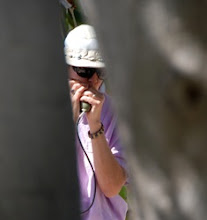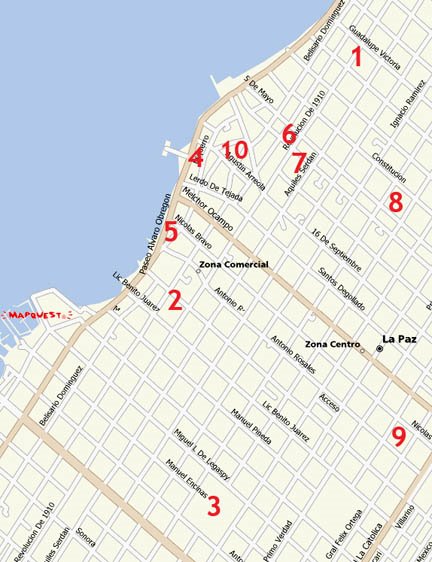Ay que bonito es volar (Oh, how lovely it is to fly)
A las dos de la mañana (At two o'clock in the morning)
A las dos de la mañana (At two o'clock in the morning)
Ay que bonito es volar, ay mama (Oh, how lovely it is to fly! Oh, Mama)
It is November, the days of Los Muertos. Step outside after midnight and you just may hear, in the darkness, a “whoooshing” sound overhead. This is a good time to encounter La Bruja (The Witch) – a hauntingly beautiful melody with lyrics that mix humor, terror and glee.

La Bruja is a traditional Mexican song that reflects a uniquely Mexican attitude towards death. It is also a dance. The country’s Nobel laureate Octavio Paz talks about that attitude, so different from the somber kid-gloved treatment death receives at the hands of many other cultures: "The Mexican is familiar with death, jokes about it, caresses it, sleeps with it, celebrates it; it is one of his toys and his most steadfast love."
November is when Mexicans celebrate El Día de Los Muertos (the Day of the Dead). On Nov. 1 and 2, families visit the graves of loved ones, offer the departed favorite foods and drinks, and build temporary altars. This is a festival for the senses: marigolds and velvety purple coxcombs, candied skulls and fragrant sweet bread with “bones” of dough.

The lyrics of La Bruja are rife with double meanings about a witch who may also be a seductress. The composer is unknown. Salma Hayek sang the song in "Frida," a film about the Mexican artist Frida Kahlo. But my favorite version is a duet by Mexican singers Lila Downs and Eugenia León (in photos on right, Downs is in red, León is in purple). You can listen to their wonderful duet on YouTube. Go to: http://www.youtube.com/watch?v=9pT4Q5piexc
And here are the lyrics of the first few verses:
Ay que bonito es volar (Oh, how lovely it is to fly)
A las dos de la mañana (At two o'clock in the morning)
A las dos de la mañana (At two o'clock in the morning)
Ay que bonito es volar, ay mama (Oh, how lovely it is to fly! Oh, Mama)
Subir y dejarse caer (To rise and let oneself fall)
En los brazos de una dama (In the arms of a woman)
En los brazos de una dama (In the arms of a woman)
Y hasta quisiera llorar, ay mama (I almost feel like weeping, Oh, Mama)
Me agarra la bruja (The witch grabs me)
Me lleva a su casa (She takes me to her house)
Me vuelve maceta (She turns me into a flower pot)

Y una calabaza (And into a pumpkin)
Me agarra la bruja (The witch grabs me)
Me lleva al cerrito (She takes me to the hills)
Me vuelve maceta (She turns me into a flower pot)
Y una calabazito (And into a little pumpkin)
Ay dígame, ay dígame, ay dígame usted! (Oh, tell me, Oh tell me, Oh tell me, please!)
¿Cuantas criaturitas se ha chupado usted? (How many children have you sucked dry of life?)
Ninguna, ninguna, ninguna ¿no ve? (None, none, none. Don’t you see?)
Que ando en pretensiones de chuparme a usted! (It is you I intend to suck dry!)
There are several theories about the origin of La Bruja. As a dance, it is often performed by women who float slowly across the stage, each with a lit candle on her head. you can see this dance on YouTube. One version is by Grupo Estampas de Mexico. Go to http://uk.youtube.com/watch?v=XUwvaeBrR-I
Meanwhile, from a Web forum on Mexican folklore, here are a few spooky stories about the possible origin of the dance:
Theory #1: There was a young couple very much in love. The man gets sent away on a ship and the girl is left very sad and despondent. She can't bear the emptiness in her heart and so she gets into a small rowboat and, with a candle as her only source of light, heads out to the sea to find him. She's never heard from again. (From Irene Hernandez, director of Grupo Folklorico Sabor de Mexico).
Theory #2: In Mexican tradition, the presence of witches is related to the appearance of fire balls floating in the air, and thus the women dance with a lit candle on their heads. The slowness of the dance (allowing the dresses to be still) makes them look like they are floating on air.
Theory #3: The song makes reference to the drumming sounds coming in from the ocean. During the time of the slave trades some Africans would beat on the walls of the ships, as drums, for their religious purposes. These beats were carried over the ocean and the peoples on the shore thought it was some witchcraft or a bad sign coming in from the ocean.
Part of the fun of Web research is getting sidetracked. Looking for information on La Bruja led me down a few Internet side alleys. For those who want to do some exploring, here are interesting links I stumbled across:
The real Frida Kahlo Video: It’s a fragment of a documentary from The History Channel Español that uses footage from her life. The accompanying music is the lovely song, Esa Noche (This Night), by the group Café Tacuba.
http://uk.youtube.com/watch?v=ou0EOcpdJm4
Salma Hayek cantando en la película Frida (singing in the movie Frida): Here you’ll find video of Hayek practising La Bruja in the studio and of her performing in the film.
http://uk.youtube.com/watch?v=T6Oojcn0fPM
Singers Eugenia León and Lila Downs: If you enjoyed their performance of La Bruja, you can learn more about these Mexican divas from the Web. YouTube is a rich source of other performances by both singers. And you will find songs and biographical information at:
www.liladowns.com/
http://www.eugenialeon.com/.
El Dia de los Muertos: There is lots written about the holiday. Here are two good articles:
1) "Raising the dead," by Barbara Kastelein, is on the MexConnect website. Go to http://www.mexconnect.com/mex_/travel/bzm/bzmdiamuertos.html
2) “Mole Festivals and Day of the Dead,” starting page 28, in the Oct. 27th issue of Gringo Gazette.


